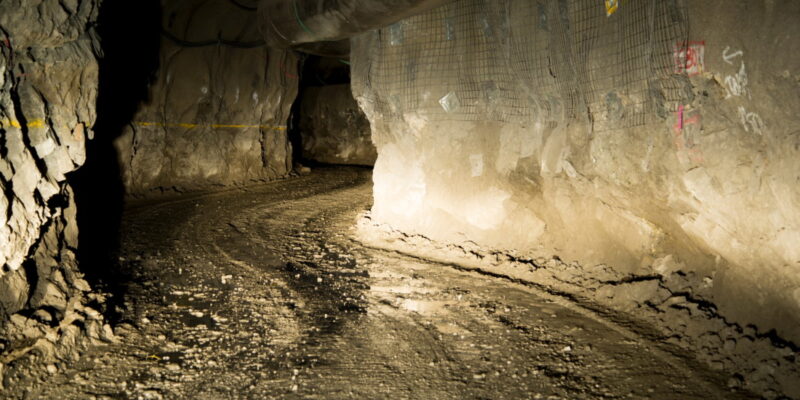Ground Entrance (RPS) or Ground Entering Radar (GPR) first appeared around the turn of the twentieth century, where they were used as non-destructive devices in photographing soil and storm cellars. This framework’s first application occured in 1910, when it was used to locate buried targets – and it has evolved since then! Fast forward to the 1970s, ground radar saw a fast rise within the military space, particularly in the discovery of anti-personnel mines.
Today, there are a few producers of GPR radar frameworks that have been optimized to relate specifically to the weight and embellishments (trolley, visualization program, etc.), however the execution of the framework remains constrained by the conditions needed.
Undoubtedly, these exhibitions are primarily represented by the medium studied and in some cases they ended up ineffectual in energy-absorbing materials, such as damp clay. This physical restrain is regularly troublesome to delude in many current GPR radar systems. GPR, moreover known as ground entering radar, may be a finder utilized to analyze cavities, territory and water bodies. GPR makes it conceivable to discover objects buried underground, and this at a few meters of depth.
How does GPR work?
GPR in underground locations may be an innovation that employs electromagnetic radiation beats to enter the ground surface and descend below it to uncover any peculiarities within the ground or other materials.
Ground-penetrating radar employs microwave band frequencies, regularly 10 MHz to 1 GHz and are frequently outlined to be versatile, with associations to a conventional tablet or other interface innovations, and built-in memory frameworks. They more often than not run out of batteries and these machines conduct beats on a region collectively known as a “sweep”. The radio wire sends a flag into the ground and sends back signals based on what is underneath the surface. Ground entering radar is utilized for things like topographical profiling and for deciding the area of objects of distinctive sorts in underground areas.
On the same guideline of operation as radars, a transmitting radio wire sends electromagnetic waves beneath the ground tested. When an altar at ground level is observed by the waves, they hand-off the data and carry out the investigation. Note that some of the time the transmitting receiving wire may be the same as the accepting antenna. The operation of GPR is to some degree comparable to seismic sounding, however the distinction lies within the reality that here the electromagnetic vitality is reflected by the zones of dielectric consistency compared to seismic sounding where the acoustic impedance is observed.
Be that as it may, the success of the study depends on the recurrence utilized and the conductivity of the soil. To be able to look within the profundities, it is prudent to probe on a ground that’s not exceptionally conductive at the hazard that the electromagnetic waves can potentially scatter in heat.
It is additionally recommended that the receiving wire be situated in contact with the ground to play down changes in air-to-ground media. In terms of recurrence, the higher the recurrence, the more effective the investigation will be. By and large, it is set in MHz or higher in GHz.
Depth
The ground itself can restrain how profound GPR signals enter up to 100 feet (30 meters). The ground has electrical resistivity, which suggests it contradicts the stream of electric current to a few degrees. As the flag enters it becomes less compelling, generally due to the sort of soil or shake being overviewed and the recurrence of the radio wire utilized. For instance, the greatest infiltration profundity in concrete is as a rule of thumb around 2 feet. In sodden clays and other tall conductivity materials, GPR signals profundity is altogether shallower, coming to almost 3 feet (1 meter) or less.
Cavity detection
The ground itself can restrain how profound GPR signals enter up to 100 feet (30 meters) profound. The ground has electrical resistivity, which suggests it contradicts the stream of electric current to a few degree. As the flag enters more profound, it normally gets less compelling.
This depends generally on the sort of soil or shakes being studied and the recurrence of the radio wire utilized. For illustration, the most extreme entrance profundity in concrete is more often than not around 2 feet. In wet clays and other tall conductivity materials, GPR in underground location signals profundity is altogether shallower, coming to around 3 feet (1 meter) or less.
Ease of use
GPR technology can be applied with ease in the following situations:
- To ensure smooth and accurate detection of underground systems without specialized knowledge
- To detect and map networks in just a few steps with an intuitive user interface
- To scan networks anywhere, anytime, even in narrow areas and under difficult conditions
- To save time on site by mapping underground systems in minutes
- Export networks in BIM or CAD compatible formats for future use
- Create professional reports and tailor them to your needs and those of your customers
- Detect all types of high-resolution underground networks and ensure reliable avoidance zones
- Check detected networks with a smart algorithm
- Import network and POI recordings to make informed decisions.

